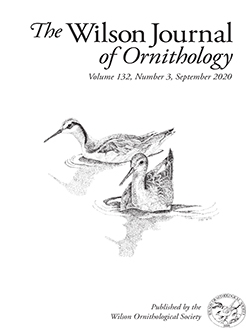The distribution of the White-tailed Hawk (Geranoaetus albicaudatus) in the United States is restricted to the prairies and savannas of the Gulf Coastal Plain of Texas. Although listed as a state threatened species, it remains one of the least studied raptors in North America. It appears to reach high densities on some Texas barrier islands despite the island vegetation communities being structurally simple and providing few nesting substrates. We compared vegetation and landscape characteristics for sets of White-tailed Hawk nest sites and random sites on 3 Texas barrier islands (Matagorda, Mustang, and North Padre) representing a gradient of low to high human presence and impact. We constructed model sets consisting of vegetation and landscape features measured at a random subsample of nest sites and random sites, then assessed model sets with logistic regression. Our best constructed model correctly differentiated 83% of nest sites from random sites on Matagorda Island, 70% on Mustang Island, and 50% on North Padre Island. Overall, it appears that the structure of nest substrates was important to White-tailed Hawk nest-site selection: shrubs categorized as densely structured with or without thorns accounted for 78% of nest substrates compared to only 13% of paired, random potential substrates. The most frequently selected nest substrates overall were yaupon (Ilex vomitoria; 43%) and Macartney rose (Rosa bracteata; 24%). If White-tailed Hawks are to be conserved on the barrier islands, a balance will need to be found between continued anthropogenic development, maintenance of habitat patches, and availability of suitable nesting substrates.
How to translate text using browser tools
28 April 2021
Nest site selection of White-tailed Hawks (Geranoaetus albicaudatus) on Texas barrier islands
Carey L. Haralson-Strobel,
Clint W. Boal,
C. Craig Farquhar
ACCESS THE FULL ARTICLE





